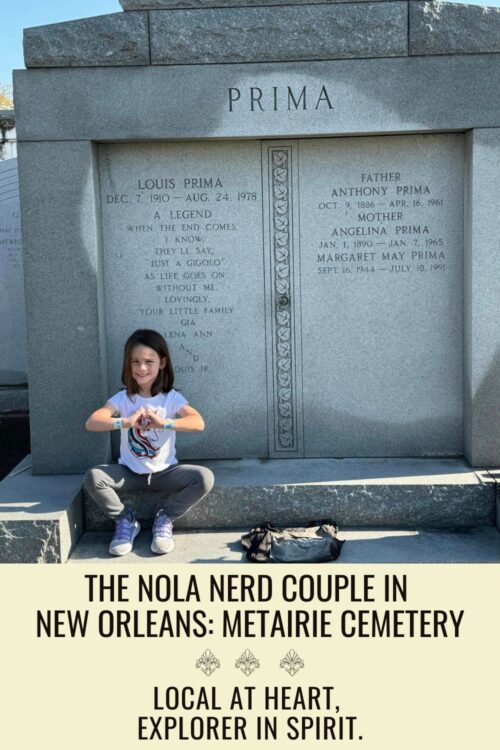Views: 0
Metairie Cemetery in New Orleans is renowned not only for its stunning above-ground tombs and historical significance but also as the final resting place of many notable figures. This exploration delves into the famous graves in Metairie Cemetery, offering a glimpse into the lives and legacies of some of the fascinating individuals interred within its historic grounds.
Graveyards and cemeteries in south Louisiana and New Orleans are a little different than most places. Most of the graves are above ground. There are two main reasons for this. One is that a lot of south Louisiana, and New Orleans in particular, are at or below sea level and have high water tables.
However, it is also because of the rich architectural and cultural heritage rooted in French and Spanish influences. This tradition reflects cemetery landscapes found throughout Europe and former European colonies. New Orleans’ tombs mirrored the designs of ancient Roman columbaria and European vaults. One of the best examples of this is Metairie Cemetery.
The Fascinating History of Metairie Cemetery
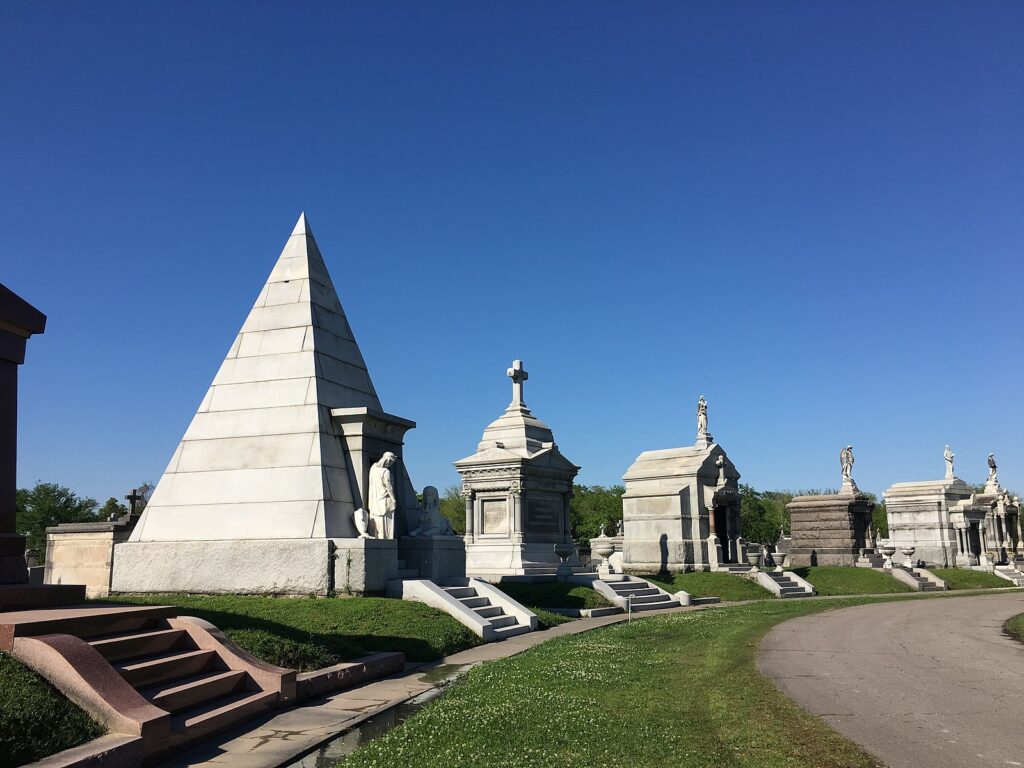
Metairie Cemetery, despite its name, isn’t in Metairie, Louisiana, but right within New Orleans’ city limits on Metairie Road. This place has an interesting start. Before it ever became a cemetery, this spot was the Metairie Race Course. It sat on a ridge by the now-gone Bayou Metairie, drawing crowds for horse racing.
Refused membership by the Jockey Club, Charles T. Howard vowed to transform the track into a cemetery. Following the Civil War and the track’s bankruptcy, Howard’s vow came true. Now, Metairie Cemetery stands as a testament to history, its design mirroring the original race track. Charles Howard, who passed away in 1885, is buried here, fulfilling his unique legacy.
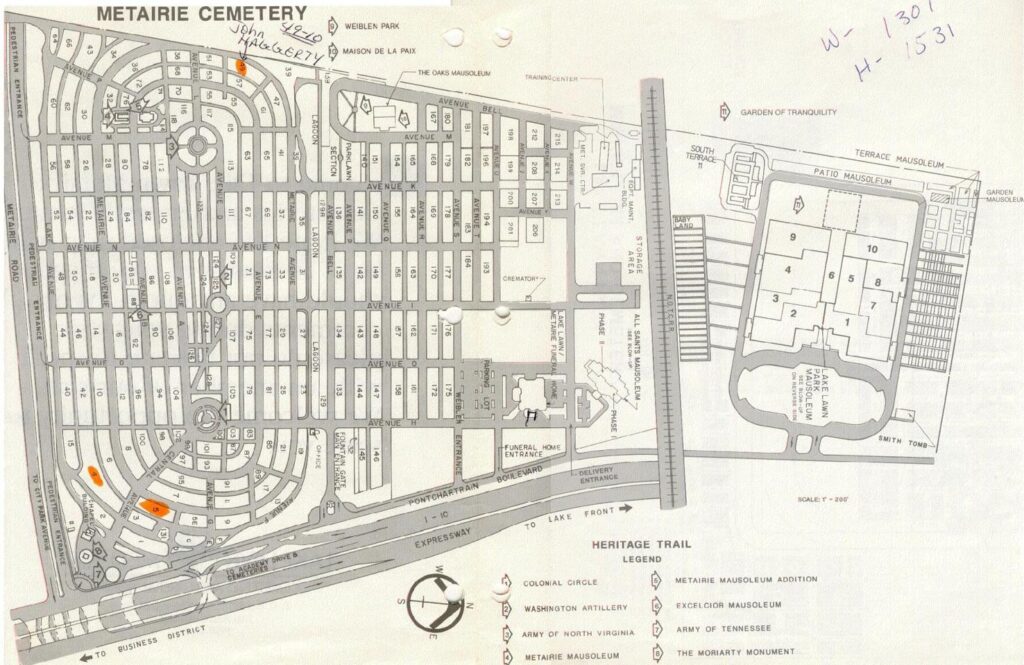
Today, Metairie Cemetery is known for its stunning marble tombs and sculptures, making it a significant site in New Orleans. It houses monuments like the Army of Tennessee monument and the tomb of Confederate soldiers, alongside other unique and elaborate memorials. This cemetery is not just a place for remembering the past; it’s a gallery of art and memory, showing the care and respect the community continues to hold for those who have passed.
Famous Graves in Metairie Cemetery
On a beautiful Saturday afternoon in March, we decided to take a spur-of-the-moment trip to the cemetery. We had two reasons for going. First, we wanted to explore as much of New Orleans and Louisiana as we could with our little one.
Yes, cemeteries can be depressing, but it is also an amazing place to teach respect and to inspire learning about the past. In addition, Mrs. Nola Nerd Couple has a relative buried here; however, she didn’t remember where she was buried.
If you aren’t from here, this cemetery covers 65 acres. This means we will have to make a return trip, one in which we go into the offices and find her.
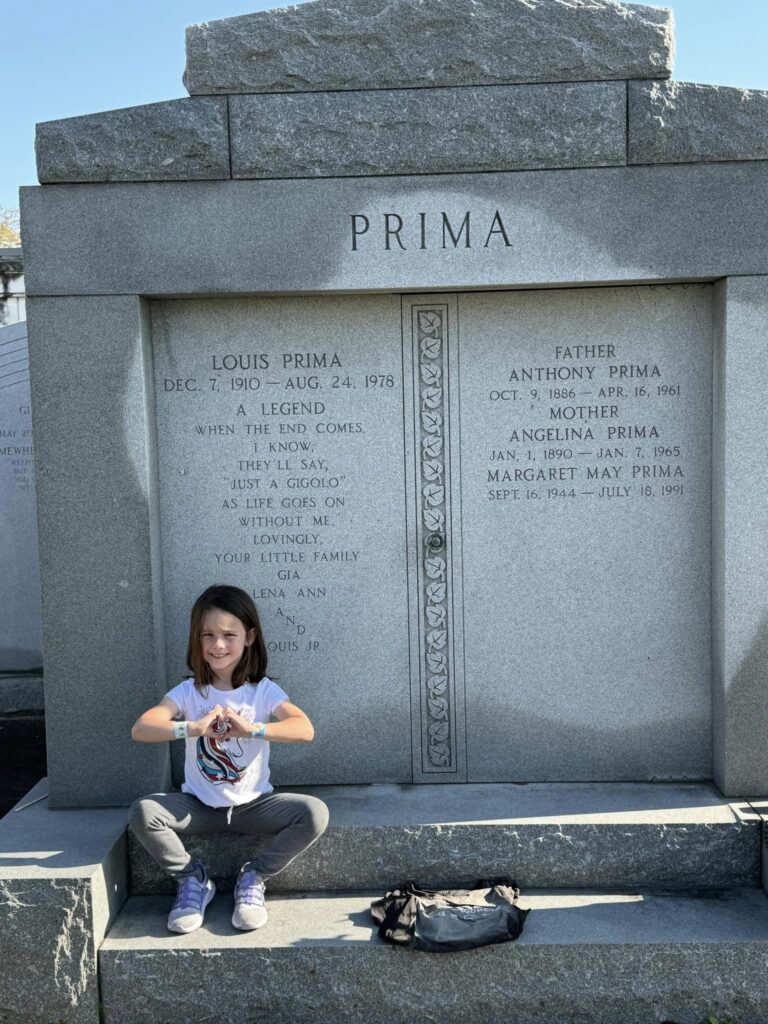
However, using findagrave.com, we were able to find some of the famous graves in Metairie Cemetery. Jazz musician Louis Prima was one of our first stops. We played “I Wan’na Be Like You” so we could remember him the way that he probably wanted to be remembered: larger than life!

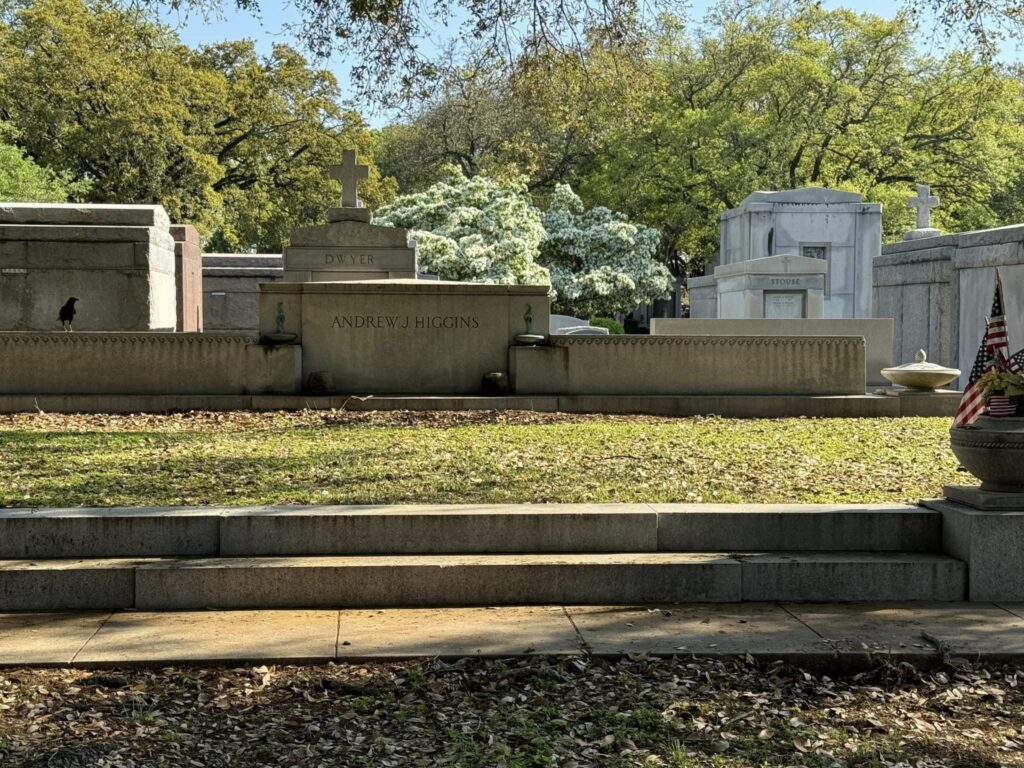
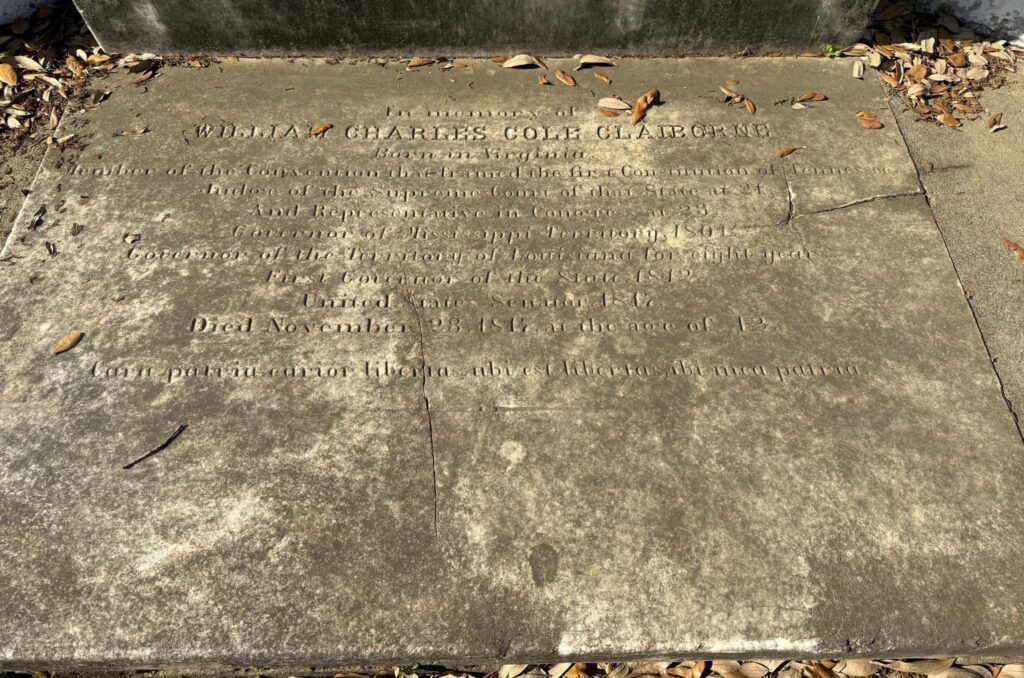
For history, we visited the graves as mentioned earlier. Still, I was more interested in finding P.B.S Pinchback’s final resting place. As a teacher of African American Studies in Louisiana, he discusses at some length in my class.
We also saw William Claiborne, the first American governor of Louisiana, and Andrew Higgins, the man who, according to Dwight Eisenhower, won World War II for the US.
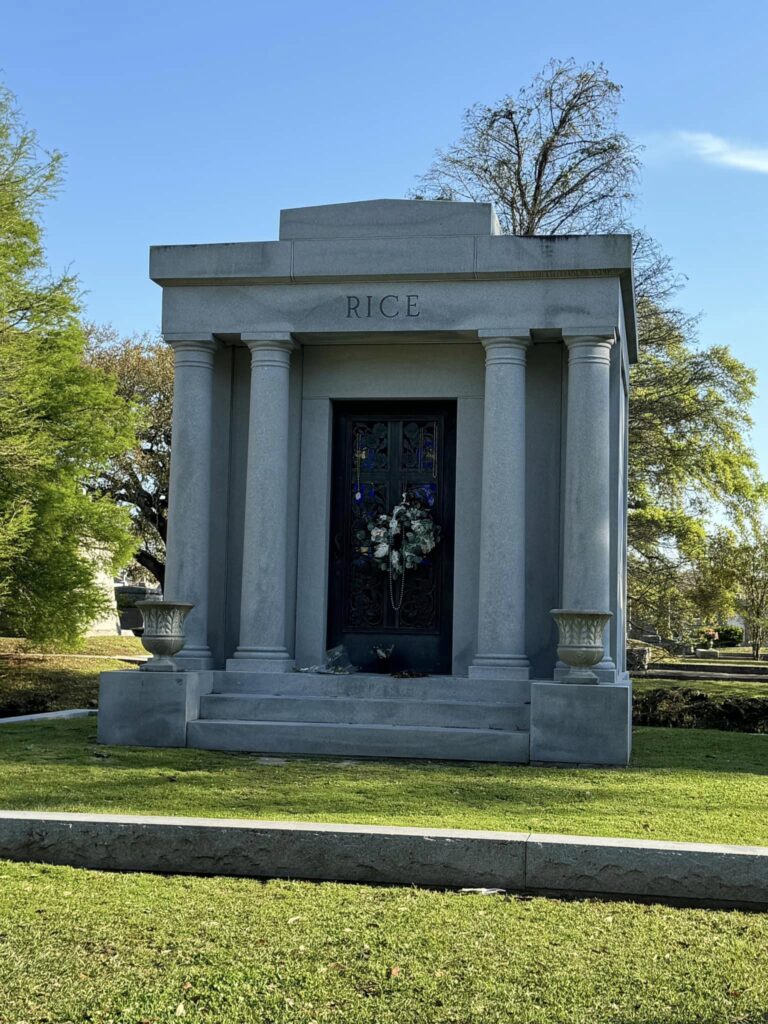
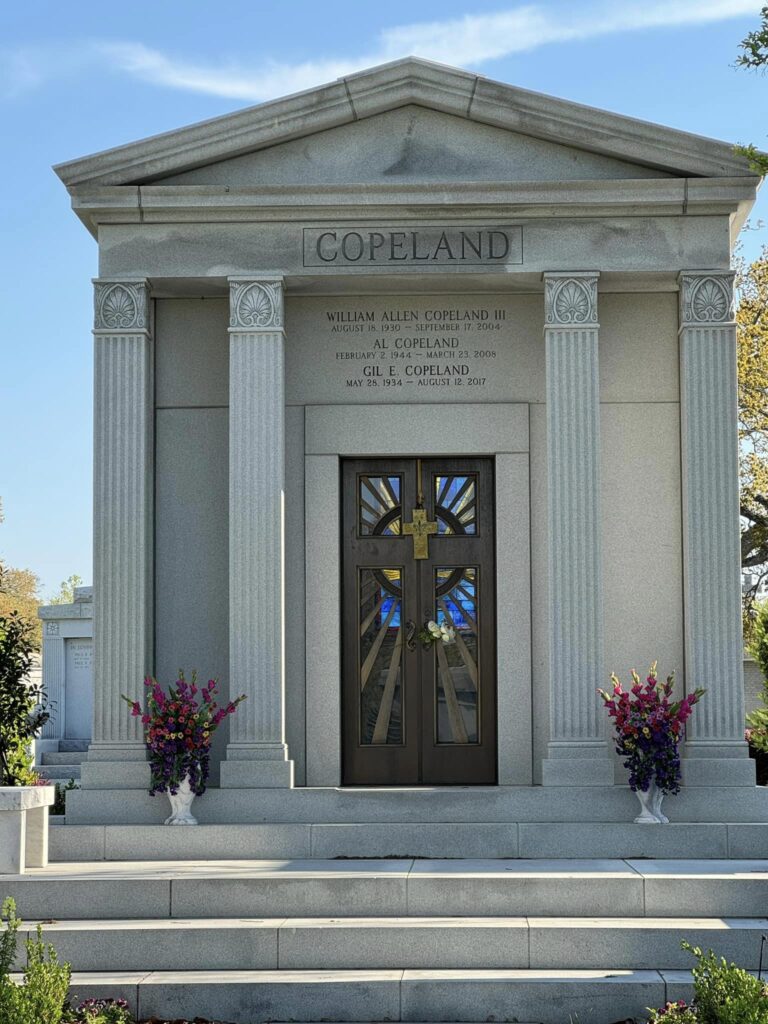
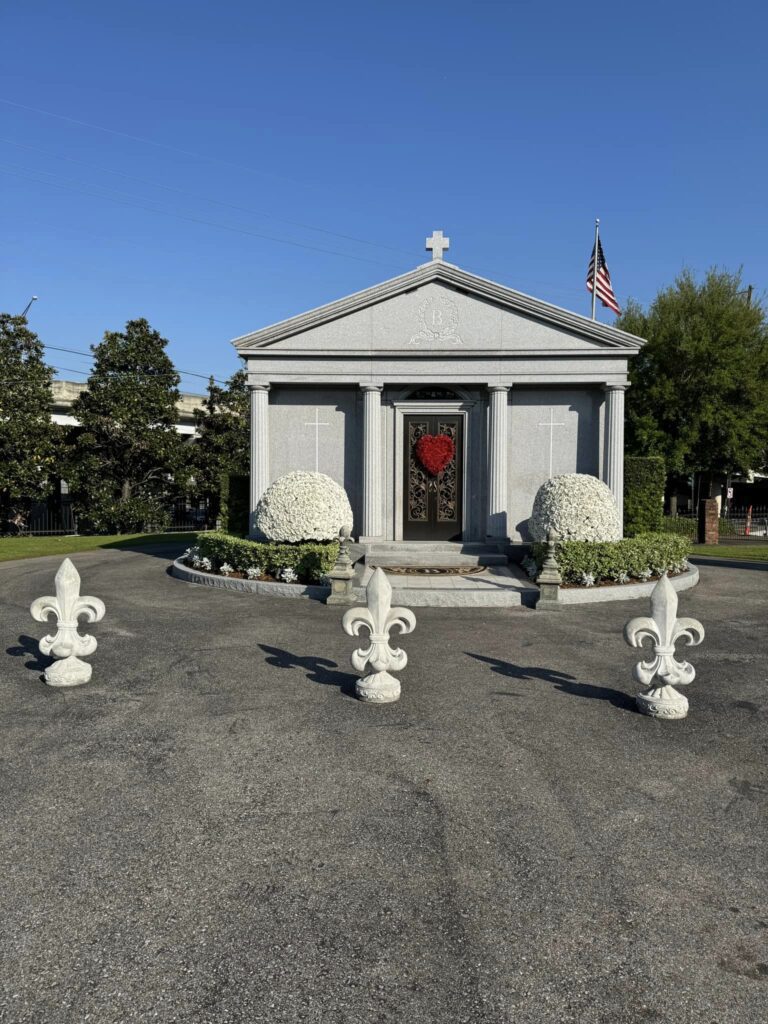
In local culture, we also viewed the final resting places of former Saints owner Tom Benson, restaurateur Al Copeland, and novelist Ann Rice. We also saw the grave and monument of Daniel A. Moriarty and his wife. The story of how this monument came to be is quite interesting.
A Site of Art and Memory
Since 1872, Metairie Cemetery has been a historic site listed on the National Register of Historic Places. It’s a final resting place for around 120,000 individuals and features a wide range of tomb styles.
Some tombs are simple, resembling small stone buildings, while others are extravagant, mimicking Greek temples or even pyramids. One notable tomb is a massive white marble sarcophagus on Metairie Road, inspired by a design from a Florentine basilica.
However, Metairie Cemetery has its rules. Activities like voodoo ceremonies, Goth weddings, and tarot card readings are strictly off-limits.
Although pets can’t be buried here, some tombs honor pets with sculptures, like the touching depiction of Francis Masich’s loyal dog, complete with a sculpted tear, highlighting the deep connections between owners and their pets. For those worried about pet aftercare, the cemetery’s complex includes a place for pet cremation and ash storage called Heaven’s Pets.
Metairie Cemetery stands as a testament to New Orleans’ rich cultural and architectural heritage, blending history with artistry in its unique above-ground tombs and monuments. From its origins as a race track to its current status as a historic site, it encapsulates the city’s distinctive approach to honoring its past and its people.
With the resting places of notable figures from music, history, and culture, alongside stunning sculptures and memorials, Metairie Cemetery is not just a final resting place but a vibrant reflection of New Orleans’ enduring spirit and legacy.
Frequently Asked Questions about Metairie Cemetery
Why are so many graves above ground in New Orleans?
Because of the high water table and European influences, above-ground tombs are common in Metairie Cemetery and across New Orleans and South Louisiana. New Orleans Catholic Cemeteries is a great place to learn more.
Who are some famous people buried here?
Notable burials include jazz musician Louis Prima, author Anne Rice, Saints owner Tom Benson, and Governor P.B.S. Pinchback.
Can I visit Metairie Cemetery?
Yes, the cemetery is open to visitors. Check the official site for the latest hours and visitor guidelines.
Are tours available?
Some local companies offer guided tours, or you can explore on your own. Make sure you know the operating hours if going alone. Also, bring water if the temperature is warm.
Is there a map available?
Yes, you can get a map at the cemetery office or online at sites like findagrave.com.
What are the rules for visitors?
Voodoo ceremonies, tarot readings, and certain events are not allowed. Be respectful of the grounds and the people resting there.
Let’s Discuss
Which famous grave in Metairie Cemetery would you like to see? Share your thoughts in the comments below! Did you know about the history of Metairie Cemetery? Would you like to see more about New Orleans and Louisiana cemeteries?
Share your thoughts in the comments below!

